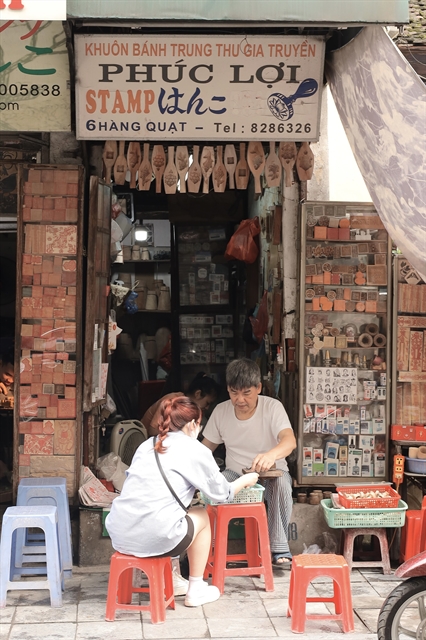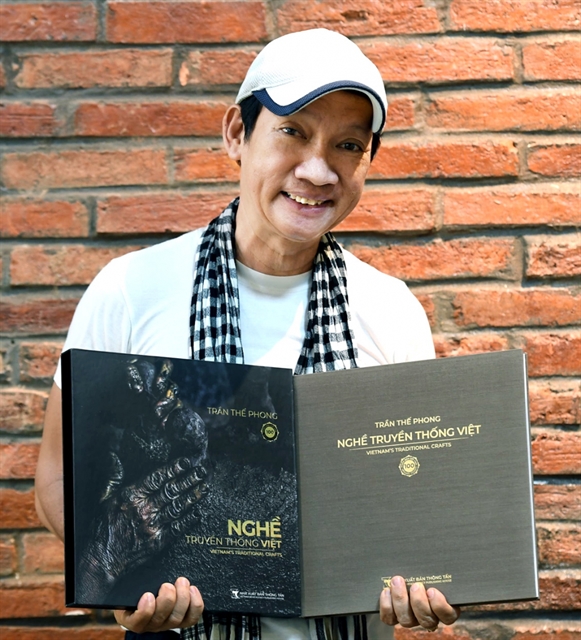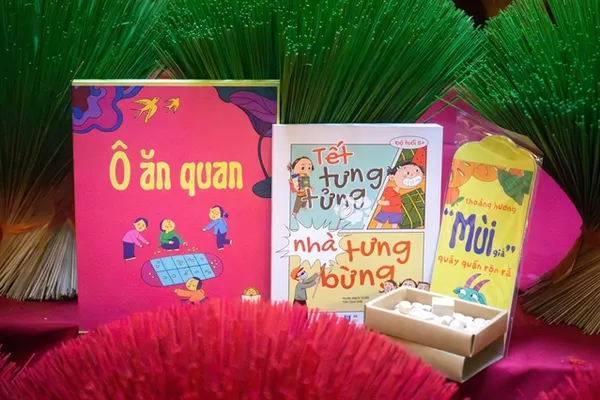 Life & Style
Life & Style

 |
| Photographer Trần Thế Phong. — Photos courtesy of the artist |
Photographer Trần Thế Phong has released his 13th photo book, entitled Nghề Truyền Thống Việt Nam (Việt Nam's Traditional Crafts) which introduces readers to Vietnamese traditional crafts, a theme that Phong has worked for dozen years.
The prolific artist has received over 200 domestic and international awards including a Grand Prix in Japan and three gold medals in the Austrian Trierenberg Super Circuit.
Phong spoke about his creative journey.
Vietnamese traditional crafts is not a new theme. What is new in your book?
Traditional Vietnamese crafts have existed for dozens or even hundreds of years and associated with Vietnamese people in their daily life.
The beauty of old values in a modern society is an interesting contrast that attracts photographers.
During the past ten years, I have travelled to traditional craft villages such as Bát Tràng Pottery, Bàu Trúc Pottery, Đông Hồ Folk Painting, An Giang Silk and Cao Bằng Paper villages. I took 66 photo collections and I chose 45 of these collections to make the book.
My criteria for making the photo series is to go to craft villages that everyone will be impressed by, so I look for craft villages that still keep tradition and simplicity. If modernity appears, I will not work there.
I have chance to listen to craft artisans' stories. The more I go, the more excited I get because I discover so many interesting things that need to be preserved and honored. I just keep shooting and perfecting the photos gradually without being put under pressure of time to release the book.
Therefore, I think I have obtained truthful and honest photos of traditional Vietnamese craft villages.
Why has it taken you ten years to make the book?
I have photographed traditional craft villages, but I dared not to carry out this project because of many things such as budget, extensive preparation and the equipment.
Plus, my thinking was still not quite fully mature. Now, I feel that I have enough favourable conditions to make the book.
Việt Nam has a lots of the craft villages. How do you select the villages to introduce?
Việt Nam has hundreds of craft villages, but for me, what to choose in a craft village to take photos is the artisans. In addition to being a part of a traditional craft village which has unique features, the artisans must exude a true passion for their traditional craft.
The artisans are friendly and close and they inspire me shooting emotionally. Therefore, the camera angles I take help people including the artisans or viewers to feel the beauty of the photos.
Selecting villages to shoot and publish is something I carefully consider because each place has many unique stories.
At the beginning, I go to popular craft villages and have a look around the villages. But many of them now are modernised, using machinery to produce their work, but modernity is not suitable for my purpose. I want to highlight the labouring beauty of the artisans so I choose villages that still preserve traditional manual work.
This forces me to search more carefully and go further. Additionally, after taking photos, I select the villages which have more unique typical characteristics.
I am very impressed with the traditional paper making of the Tày and Nùng ethnic groups in the northern mountainous province of Cao Bằng. On that trip, I felt really lucky going to a village that still maintains the traditional handmade paper craft. I see that Việt Nam has so many interesting things to explore.
Do you encounter difficulty during the book making?
I choose the book title as Việt Nam's Traditional Crafts not Việt Nam's Traditional Craft Villages for a reason.
There are craft villages that are no longer as busy as before. Some villages have only a few households or even just one household keeping the traditional craft alive.
I come and see the craft village which is deserted. The villagers don't work because they receive few orders. I never want to take installation photos so I have to wait for another time.
Sometimes, I have to come to the villages several times because of the bad weather or because I didn't meet the right character.
It is currently very difficult to find a handmade mat village. I once went to take photo in the central province of Phú Yên and I saw a mat was handmade for a whole day only but it was sold for a few hundred thousand of đồng.
Meanwhile, there are mushrooming factories to produce hundreds of mats a day and of course it saves time and effort.
I think that if I don't take photos of these traditional crafts, I am afraid of that similar craft villages would gradually disappear and it will be difficult to preserve the traditional crafts.
Besides, people who love their crafts are really rare nowadays. Previously, I went to take photo in a conical making village in the central province of Thừa Thiên-Huế. An artisan taught about 20 employees but over time, only one or two people follow the craft.
Hundreds of trips taking photos over the past decade is also a big challenge for me in terms of not only health condition, but also transportation and accommodation costs.
The biggest challenge is how to shoot with a view to honour Vietnamese traditional crafts which have great values existing for hundreds of years. I also wanted to make the booking using good printed paper and with a perfect cover design. VNS




